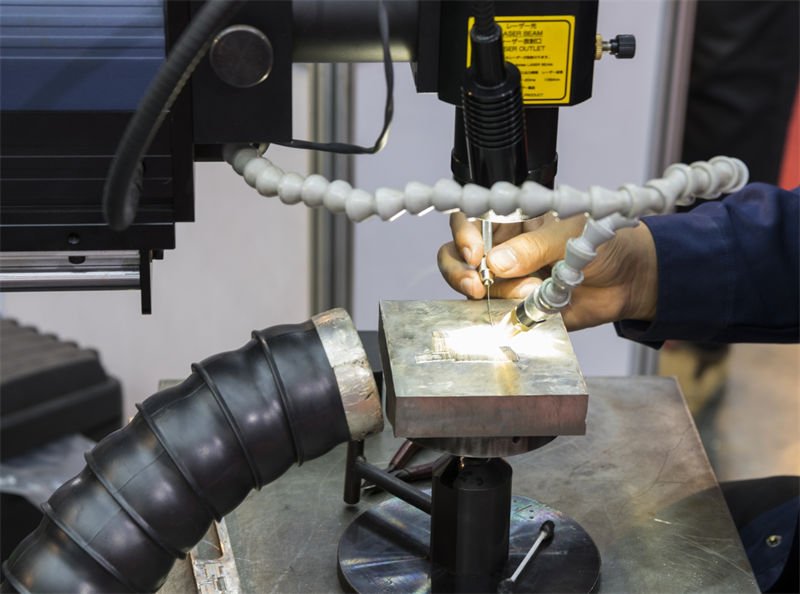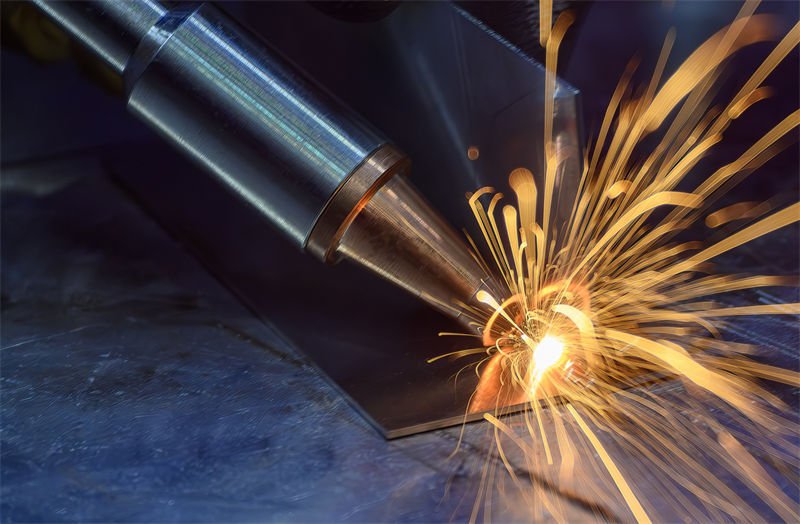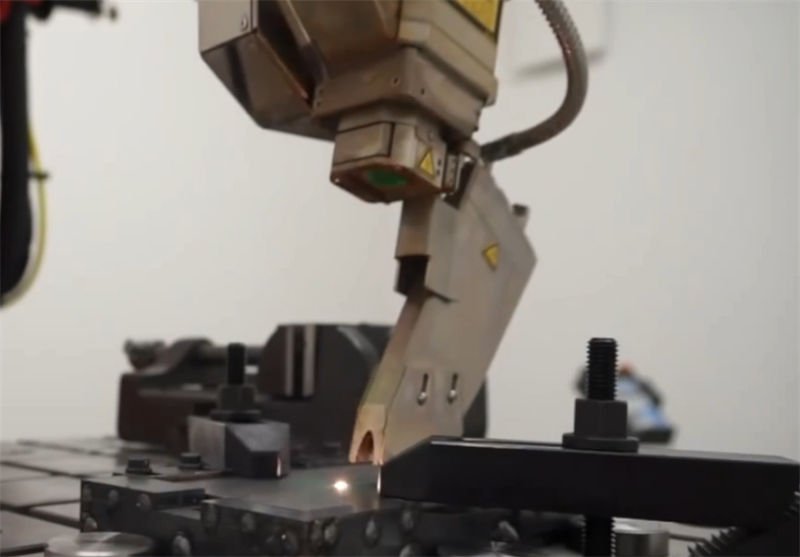
Ever wondered how industries achieve such precision in welding? Enter laser welding, a technology that’s changing the game.
Laser welding is a cutting-edge technique that uses a focused beam of light to melt and fuse materials together. This process stands out for its high precision, minimal thermal distortion, and capability to weld hard-to-reach areas, making it a superior choice in many applications.
But there’s much more beneath the surface. Let’s explore the intricate stages of laser welding, drawing insights from industry experts to truly understand this advanced technology.
Laser welding minimizes thermal distortion compared to traditional methods.True
Laser welding uses a focused beam, reducing heat-affected zones and distortion.
What Are the Key Stages in the Laser Welding Process?
Understanding the stages in laser welding is crucial for mastering this advanced technique.
The laser welding process consists of key stages: material preparation, equipment setup, welding execution, and post-weld inspection. Each stage requires precision and attention to detail to ensure high-quality welds. Proper cleaning, parameter selection, stable execution, and thorough inspection are vital for achieving optimal results in laser welding.

Material Preparation
Before any welding begins, ensuring the cleanliness and compatibility of materials is critical. The surface must be clean, free of oil stains, oxide layers, and impurities. For instance, polishing metal materials with sandpaper and wiping them with organic solvents like acetone or alcohol is standard practice. This step is essential because even minor contamination can significantly impact weld quality, especially in sensitive materials like aluminum alloys.
Material matching is another aspect of preparation. When welding dissimilar materials, understanding their physical and chemical properties is necessary. Some combinations might require special parameters or intermediate materials to prevent adverse reactions during welding.
Equipment Debugging and Parameter Selection
This stage involves setting up the laser welding equipment and selecting appropriate parameters:
- Laser Power: The power must be carefully adjusted based on material thickness. For thin sheets, start with lower power and increase as needed. For thicker materials like 3mm carbon steel, higher power levels are required.
- Pulse Frequency: Particularly in pulsed laser applications, pulse frequency impacts heat accumulation. Lower frequencies help manage heat-sensitive materials, while higher frequencies can speed up the process.
- Welding Speed: Adjusting speed is crucial; higher speeds need more power. When dealing with complex shapes or precision parts, slowing down ensures quality.
- Spot Size: Smaller spots are for fine welding with high energy density, while larger spots work for broader areas but require more power.
Welding Process Execution
The welding stage demands stability and careful monitoring:
- Maintain Stability: Ensure the welding head remains stable relative to the workpiece. Any movement can cause inconsistencies in the weld.
- Monitor the Molten Pool: A consistent molten pool indicates a good weld. Anomalies suggest parameter or material issues.
- Use of Shielding Gas: Protect easily oxidized materials with a shielding gas like argon. Flow rates must be moderate to avoid disrupting the weld.
Post-Welding Inspection and Quality Control
Once welding is complete, a thorough inspection is necessary:
- Appearance Inspection: Check for smoothness and continuity. Defects can impact performance and aesthetics.
- Strength Test: For load-bearing structures, conduct strength tests to ensure the weld meets design requirements.
The intricate process of laser welding1 requires mastery over each stage to harness its full potential for precision engineering and manufacturing applications.
Material cleaning is optional in laser welding.False
Proper cleaning is essential to prevent contamination affecting weld quality.
Pulse frequency affects heat accumulation in laser welding.True
Lower frequencies manage heat-sensitive materials; higher speeds up the process.
How Does Laser Welding Compare to Traditional Welding Methods?
In the realm of welding, laser technology is emerging as a game-changer, offering unique advantages over traditional methods.
Laser welding distinguishes itself from traditional welding through superior precision, faster processing speeds, and reduced thermal distortion. Unlike conventional methods like MIG or TIG welding, laser welding provides the flexibility to join diverse materials with minimal heat-affected zones, making it ideal for applications requiring high-quality, clean welds.

Precision and Accuracy
One of the most significant advantages of laser welding over traditional methods is its precision. Laser beams can be focused to a tiny spot, allowing for highly accurate welds. This precision is particularly beneficial when working on intricate components or assemblies where traditional methods may struggle.
For instance, in the automotive industry2, laser welding is used to join car body parts with minimal gaps, ensuring structural integrity without compromising aesthetics.
Speed and Efficiency
Laser welding offers much faster processing speeds compared to traditional methods. This speed is crucial in mass production settings where time is a premium. The quick cooling rates associated with laser welding also reduce the risk of material distortion, a common challenge in traditional methods.
In electronics manufacturing3, for example, laser welding’s rapid pace enhances productivity while maintaining high standards of quality.
Versatility with Materials
Traditional welding methods often struggle with materials like aluminum or high-strength steels due to their high reflectivity or specific melting points. Laser welding excels in these areas, providing solutions to weld materials that are otherwise difficult to join.
This capability is essential in aerospace applications4, where materials such as titanium are frequently used.
| Method | Precision | Speed | Material Compatibility |
|---|---|---|---|
| Laser Welding | High | Fast | Wide range |
| MIG/TIG Welding | Moderate | Moderate | Limited by material |
Thermal Impact
The reduced heat input of laser welding minimizes the heat-affected zone (HAZ), preserving the properties of the base material. This contrasts with traditional welding methods where extensive HAZ can lead to structural weaknesses or warping.
In medical device manufacturing5, maintaining material integrity is vital, making laser welding the preferred choice.
Laser welding’s benefits are evident across various industries, yet it also poses challenges like higher initial equipment costs and specific skill requirements. Understanding these nuances helps in selecting the appropriate method for each application.
Laser welding offers faster processing speeds than MIG welding.True
Laser welding's rapid speed enhances productivity in mass production.
Traditional welding methods have a smaller heat-affected zone.False
Laser welding minimizes the heat-affected zone, preserving material properties.
What Equipment Is Essential for Effective Laser Welding?
Understanding the right equipment is crucial for mastering laser welding techniques.
Essential equipment for laser welding includes a laser source, welding head, protective gear, and a stable work surface. The laser source determines the power and type of laser used, while the welding head ensures precision. Proper protective gear and a stable work surface enhance safety and accuracy during the welding process.

The Core Components of Laser Welding Equipment
When embarking on any laser welding task, having the right laser source6 is pivotal. The laser source not only defines the power but also the type of laser suitable for your project, whether it be CO2, fiber, or Nd:YAG lasers. These sources emit concentrated beams essential for the melting and fusing processes. For instance, fiber lasers are often preferred for their efficiency in metal welding.
Laser Welding Head
The welding head7 is the precision instrument of the operation, guiding the beam onto the workpiece with accuracy. It’s vital to choose a head compatible with your laser source and capable of delivering the desired spot size and focus depth. Adjustable heads allow for fine-tuning, ensuring that the laser’s energy is efficiently utilized.
Protective Gear and Safety Measures
Safety in laser welding cannot be overstated. Operators must equip themselves with appropriate protective gear8 such as laser safety goggles and gloves to shield against harmful radiation and heat. Ensuring that the workspace is ventilated can also prevent inhalation of any toxic fumes generated during welding.
Supporting Equipment and Tools
Stable Work Surface
A stable work surface is indispensable for maintaining the quality of welds. It prevents vibrations and movements that can disrupt the welding process. Using clamping systems or fixtures can further secure materials, allowing for precise operations without manual interference.
Shielding Gas Supply
Many metals require a shielding gas9 to prevent oxidation during welding. For instance, argon or helium can protect sensitive materials like titanium from unwanted reactions with atmospheric gases.
| Equipment | Function | Example Uses |
|---|---|---|
| Laser Source | Provides necessary beam power | Fiber lasers for metal welding |
| Welding Head | Directs and focuses the laser beam | Adjustable heads for different applications |
| Protective Gear | Ensures operator safety | Goggles, gloves, ventilated environments |
| Stable Work Surface | Prevents material movement | Clamping systems for precision welding |
| Shielding Gas Supply | Protects material from oxidation | Argon for titanium welding |
In conclusion, the successful execution of laser welding hinges on a blend of advanced equipment and diligent safety practices. By understanding each component’s role and function, welders can ensure efficient and high-quality results.
Fiber lasers are preferred for metal welding.True
Fiber lasers offer efficiency and precision, making them ideal for metals.
A stable work surface is optional in laser welding.False
Stability is crucial to prevent disruptions and ensure precise welds.
What Are the Potential Drawbacks of Laser Welding?
Laser welding, while efficient, comes with challenges that can impact results.
The potential drawbacks of laser welding include high initial costs, sensitivity to surface conditions, and limitations in welding thick materials. These factors necessitate careful planning and preparation to ensure successful welds.

High Initial Costs
One significant drawback of laser welding is the high initial investment required for the equipment. Laser welding machines are often more expensive than traditional welding setups. This cost includes not only the machine itself but also the specialized training needed for operators. Companies must weigh these costs against the potential benefits when deciding whether to implement laser welding.
Sensitivity to Surface Conditions
Laser welding requires extremely clean surfaces to work effectively. Any impurities like oil, dirt, or oxidation can affect the weld quality. For instance, when welding aluminum alloys, even minor contamination can lead to defects such as pores. Material preparation10 is therefore crucial, often involving meticulous cleaning processes such as polishing and solvent wiping.
Limitations with Thick Materials
While laser welding excels in precision and speed, it can struggle with thick materials. The laser’s penetration depth is limited, which can be a problem for applications requiring deep welds. In cases where thick materials must be joined, traditional methods or additional techniques may be required to achieve the desired strength and integrity.
Requirement for Precise Control
The necessity for precise control over parameters such as power, pulse frequency, and speed is another challenge. Any deviation can result in suboptimal welds. For example, incorrect power settings may cause the material to burn through or result in insufficient penetration. Adjusting these parameters requires experience and expertise, which could be a barrier for some operators.
Dependence on External Factors
External factors such as the stability of the welding environment can also influence the outcome. Factors like vibrations or inconsistent shielding gas flow can lead to defects. Operators must ensure that the environment is stable and that external factors are controlled to maintain weld quality.
These drawbacks highlight the need for careful consideration and planning when utilizing laser welding technology in industrial applications.
Laser welding has high initial costs.True
The equipment and training for laser welding are costly.
Laser welding is ideal for thick materials.False
Laser welding struggles with penetration in thick materials.
Conclusion
Laser welding combines precision and efficiency, providing remarkable advantages across diverse industries. Explore its potential to elevate your manufacturing capabilities.
-
Explore detailed insights into each stage of laser welding.: First, the laser beam welding machine focuses a highly concentrated light beam on the cavity between two or more materials to create a firm bond … ↩
-
Discover how laser welding enhances car body assembly and structural integrity.: Laser welding is also widely used for metal welding of many sub-components, including airbag initiators, motor coil windings, battery tab-to-bus … ↩
-
Learn about laser welding’s role in boosting electronics production efficiency.: Spot and seam welding of metals with lasers is precise and allows joining of very small welding spots and fine welding seams of miniaturized, electrical … ↩
-
Explore how laser technology welds high-strength aerospace materials effectively.: It provides solutions to multiple engineering problems such as fewer heat effects, higher quality, higher precision, and more. ↩
-
See why laser welding is crucial for creating reliable medical devices.: Laser welding systems used for manufacturing medical devices are generally automated and require custom software, motion, vision, and tooling. The software … ↩
-
Explore different types of lasers suitable for various materials.: This page introduces typical lasers used for laser welding, including gas (CO2), solid (YAG), fiber, disk, and semiconductor lasers. ↩
-
Understand how welding heads enhance precision in laser tasks.: Laser welding offers a wide range of advantages compared to other methods like MIG, TIG, and arc welding. Let’s look at the most important ones. ↩
-
Learn about essential safety equipment to protect operators.: Laser Safety Industries provides fiber laser welding safety equipment, glasses, goggles, barriers, curtains, and windows. ↩
-
Discover how shielding gases prevent oxidation in metals.: As a requirement of welding with a solid, gas-shielded flux-cored or metal-cored wire, the primary purpose of shielding gas is to protect the molten weld pool … ↩
-
Proper cleaning ensures optimal weld quality by removing impurities.: High quality welding begins with cleaning the base metal of any corrosion, contaminants, or existing coatings that could compromise weld … ↩



